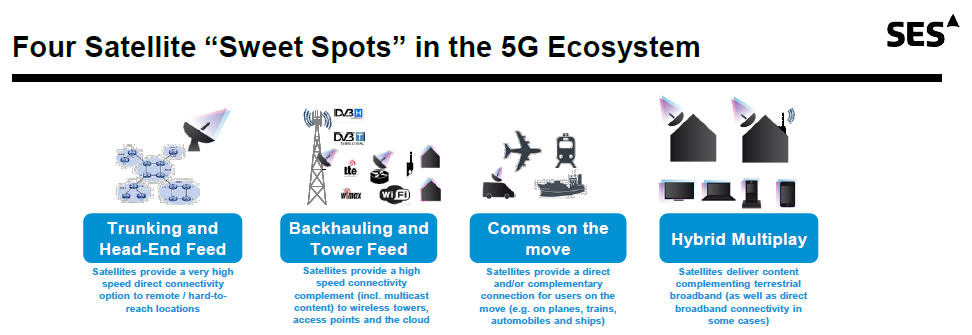Satellite roles in 5G are being adopted by the Third Generation Partnership Project (3GPP), the mobile standards development group. Specifically, 3GPP is looking at standards ensuring that satellite network elements are fully compatible with 5G protocols, so that use of a satellite network is transparent to 5G, in the use modes where satellite is involved.
Given that 5G will unify mobile and fixed networks, core networks and edge access networks will be complementary.
The standards group now is codifying use of non-terrestrial network (satellite and others, including unmanned aerial vehicles) so that multiple transport and access networks can be used to support 5G networks.
That effort is logical enough. There are some applications where satellite has been the only alternative (aircraft communications, ships at sea, backhaul in remote areas). And to the extent that 5G devices are expected to work “everywhere,” that also means 5G protocols are, at the very least, not prohibitive when satellite transport is used.
Spectrum decisions relating to 5G should not be mutually exclusive of current and next-generation high throughput satellite (HTS) and very high throughput satellite (VHTS) designs, SES argues.
Multicasting support will be necessary in 5G specifications to optimize network bandwidth use, and especially important in order to take full advantage of satellite capabilities, SES argues.
Intelligent routing, dynamic cache management and adaptive streaming and quality-of-service features will have to incorporated into 5G network as well, to optimize use of different transmission technologies, as well.
Also, satellite network elements will need to be implemented and managed based on the same Network Virtualization and Software Defined Networks philosophy as the rest of the network,. SES argues.
According to SES, geosynchronous satellites can support multi-gigabit per second data rates for enhanced mobile broadband, mobile backhaul, and applications where latency of 500 milliseconds round-trip is acceptable. Satellite should continue to be useful for content delivery to edge caching sites as well.
Constellations of low earth orbit and mid-earth orbit will have lower latency than 500 ms round trip.
New ground segment technologies, such as smaller, lower cost, electronically steerable, and phased-array satellite transceivers will support IoT sensors, SES argues.
The bottom line is the continued ability of satellite “bent pipe” transport to support 5G applications as has been possible in prior eras of communications.
As always, business models are at stake. Intelsat, for example, wants the U.S. Federal Communications Commission to allow use of existing C-band capacity available to satellite firms by other entities who want to use the spectrum for 5G services.
That, in turn, is largely a continuation of sparring between the mobile and satellite industry over use of spectrum, in the C band and elsewhere. The Intelsate proposal would allow satellite interests to keep and monetize C-band spectrum to support 5G service providers, instead of losing control to mobile interests outright.
The four main use cases for satellite roles supporting 5G therefore include trunking, backhaul, “on the move” (aircraft, ship, train, truck) communications and and content delivery. 
No comments:
Post a Comment